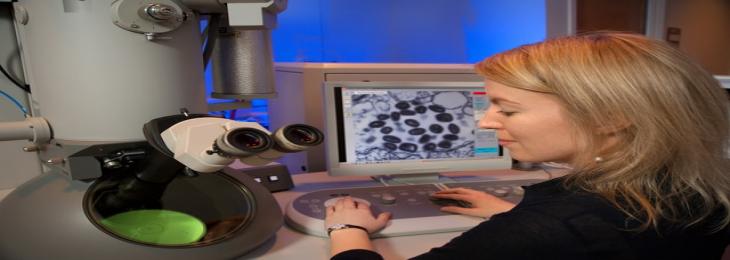Scientists Observed the Functionality of an Odor Receptor
Aug, 2021 - By SMI

Share
Researchers successfully obtain the photo of a receptor during its work with the help of an electron microscope related technique.
Sense of smell of an organism is the most intricate to understand and is least been able to acknowledge. Experimenters at Rockefeller University successfully took a picture of the first photograph of an olfactory receptor with the help of a cryo-electron microscope. The image shows an olfactory receptor of an insect working in a simple system.
Important features that help to understand the surrounding around are the sensory organs. Touch receptors, photoreceptors, taste receptors, sound receptors, and olfactory receptors are used by the skin, retina, tongue, inner ear, and nose respectively. They all connect sensory organs to brain, thus allowing an organism to understand the world around it and help respond to any type of stimuli.
But these receptors for smell are most mysterious and puzzling of all. An organism needs three types to see and six types to hear. In all, it needs receptors around 400 to smell. To detect different types of odorant particles which are around millions are also detected by the receptors. The distinct smell of coffee or any flower is made up of numerous chemical constituents that vitalize the organization of receptors, and this particular actuation pattern helps the brain to analyze and recognize the smell.
To find out the logic behind all these techniques, the researchers experimented with the photograph obtained from an electron microscope. A beam of electrons was fired over a frozen object which gave a 3D photo of molecular constructions. An insect named jumping Bristle tail was used to perform an experiment. It has a simple system of sensing odor.
OR5 was chosen by the team for testing and it reciprocated to 60 percent of molecules. Later a combined study was done with OR5 receptor once when it was alone and once when it was combined with one to two odorant molecules.
This also helped researchers to understand the logic behind the mutation of amino acid that binds the site and decides the preference of the molecule that will stick. This same technique will be carried out in all humans and animals.
Share
Stratagem Market Insights
533 Airport Boulevard, Suite 400, Burlingame, CA 94010, United States
Delivery Center
403, 4th Floor, Bremen Business Center
Aundh, Pune, Maharashtra 411007
India
